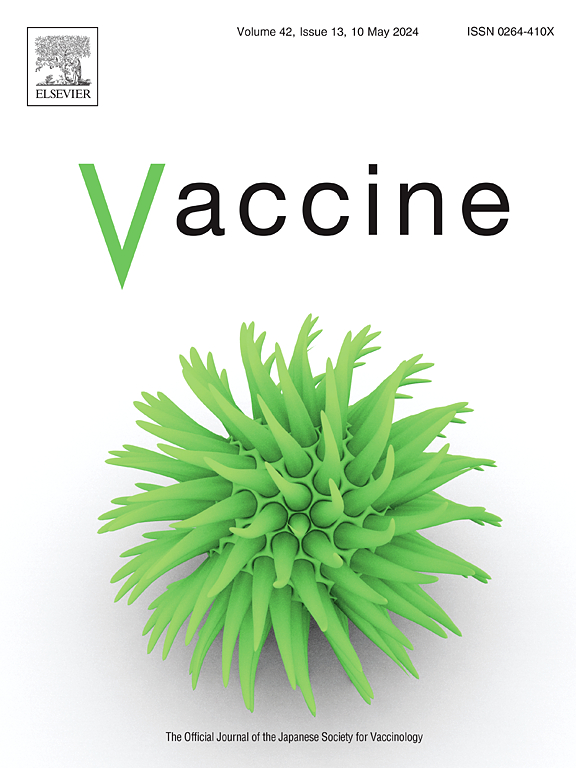Lessons learnt during establishment of COVID-19 active vaccine safety surveillance in nine African countries
IF 4.5
3区 医学
Q2 IMMUNOLOGY
引用次数: 0
Abstract
Background
Globally, several gaps in vaccine safety surveillance exist, particularly in low- and middle- income countries (LMICs). Establishing and maintaining vaccine surveillance platforms in resource-constrained settings poses significant challenges. These countries often rely on paper-based medical records and immunization cards, lack unique patient identifiers across the healthcare systems, have limited electronic data capture capabilities, and face a shortage of clinical reviewers for case assessments.
This report highlights the establishment of two active vaccine safety surveillance studies across nine African countries: (i) Active COVID-19 vaccine safety surveillance (ACVaSS) in eight COVAX 92 Advanced Market Commitment (AMC-92) eligible African countries including Ethiopia, Ghana, Kenya, Mali, Malawi, Mozambique, Nigeria and Eswatini and (ii) the South African COVID-19 vaccine safety surveillance study (SA-CVSS).
Methods
Both ACVaSS and SA-CVSS were hospital-based sentinel active surveillance studies designed to monitor the safety of COVID-19 vaccines in the aforementioned COVAX AMC-92 countries and South Africa, a middle-income African country. Patients presenting to healthcare facilities with illnesses resembling pre-selected adverse events of special interest (AESIs), were enrolled, with informed consent, into the studies. The Brighton Collaboration Case Definitions were applied to classify AESIs.
Findings
Over 60,000 admitted patients were screened and over 12,700 eligible patients were enrolled in 18 months. Despite challenges in accessing and abstracting data from predominantly paper-based medical and vaccination records, the identification of specific AESIs and estimating association with vaccination status was feasible in LMIC healthcare facilities.
Conclusions
The establishment of active vaccine safety surveillance sentinel sites is achievable in LMICs, though the lack of digital medical records hindered data accessibility and availability. Regulatory authorities, health departments and organizations supporting immunization programs must prioritize the development, maintenance and funding of active vaccine safety surveillance systems. Such surveillance is crucial to ensuring that new vaccines are properly monitored and assessed for safety following their introduction and use in these populations.
Funding
The SA-CVSS study was funded by a US CDC Grant to the GVDN (grant reference: CDC Funder Award Number: 1 NU38CK000485–01-00), the South African Medical Research Council (SAMRC) and the Task Force for Global Health (RVD_CDC-COV). Gavi, The Vaccine Alliance, funded the ACVaSS study (Agreement reference: MEL10500921).
在9个非洲国家建立COVID-19活疫苗安全监测的经验教训
在全球范围内,疫苗安全监测存在一些差距,特别是在低收入和中等收入国家(LMICs)。在资源有限的情况下建立和维持疫苗监测平台构成重大挑战。这些国家往往依赖纸质病历和免疫卡,在整个卫生保健系统中缺乏唯一的患者标识符,电子数据捕获能力有限,并且面临病例评估临床审稿人短缺的问题。本报告重点介绍了在9个非洲国家开展的两项活疫苗安全监测研究:(i)在埃塞俄比亚、加纳、肯尼亚、马里、马拉维、莫桑比克、尼日利亚和斯瓦蒂尼等8个符合COVAX 92先进市场承诺(am -92)条件的非洲国家开展的COVID-19活疫苗安全监测(ACVaSS),以及(ii)南非COVID-19疫苗安全监测研究(SA-CVSS)。方法ACVaSS和SA-CVSS均为基于医院的哨点主动监测研究,旨在监测上述COVAX AMC-92国家和非洲中等收入国家南非COVID-19疫苗的安全性。在知情同意的情况下,向医疗机构就诊的患有类似于预先选择的特殊兴趣不良事件(AESIs)的疾病的患者被纳入研究。应用布莱顿合作案例定义对aesi进行分类。研究发现,在18个月的时间里,超过6万名入院患者接受了筛查,超过12700名符合条件的患者入组。尽管在获取和提取主要基于纸张的医疗和疫苗接种记录的数据方面存在挑战,但在低收入和中等收入国家医疗机构中,确定特定aesi并估计与疫苗接种状况的关联是可行的。结论在中低收入国家建立活疫苗安全监测哨点是可以实现的,但缺乏数字化病历阻碍了数据的可及性和可获得性。监管当局、卫生部门和支持免疫规划的组织必须优先发展、维护和资助活疫苗安全监测系统。这种监测对于确保在这些人群中引入和使用新疫苗后对其安全性进行适当监测和评估至关重要。SA-CVSS研究由美国疾病控制与预防中心向GVDN拨款(资助编号:1 NU38CK000485-01-00)、南非医学研究理事会(SAMRC)和全球卫生工作组(RVD_CDC-COV)资助。全球疫苗免疫联盟(Gavi)资助了ACVaSS研究(协议参考:MEL10500921)。
本文章由计算机程序翻译,如有差异,请以英文原文为准。
求助全文
约1分钟内获得全文
求助全文
来源期刊

Vaccine
医学-免疫学
CiteScore
8.70
自引率
5.50%
发文量
992
审稿时长
131 days
期刊介绍:
Vaccine is unique in publishing the highest quality science across all disciplines relevant to the field of vaccinology - all original article submissions across basic and clinical research, vaccine manufacturing, history, public policy, behavioral science and ethics, social sciences, safety, and many other related areas are welcomed. The submission categories as given in the Guide for Authors indicate where we receive the most papers. Papers outside these major areas are also welcome and authors are encouraged to contact us with specific questions.
 求助内容:
求助内容: 应助结果提醒方式:
应助结果提醒方式:


